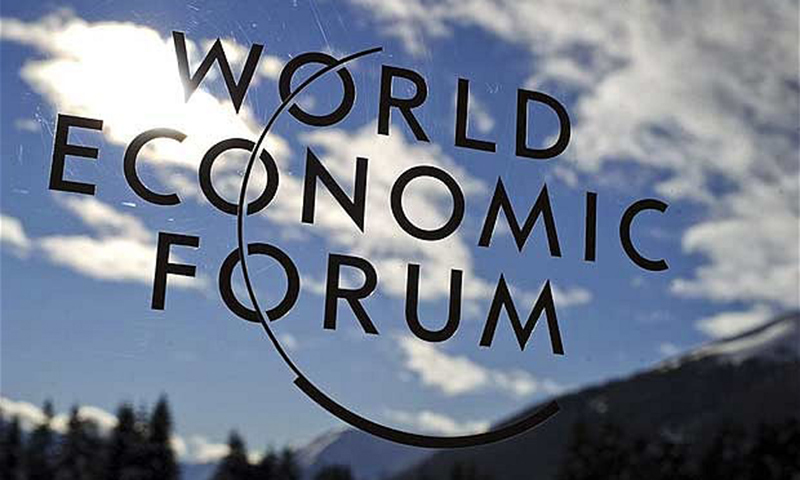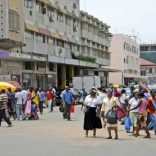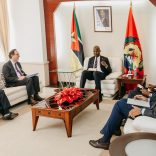Mozambique: Social security hopes to double number of beneficiaries by 2031
Mozambique ranks 133 out of 138 on Global Competitiveness Index

Mozambique is ranked among the bottom ten countries out of the 138 that are part of this year’s edition, Cape Verde is the highest-ranked African Portuguese-language in the 2016-2017 Competitiveness Index, released at the World Economic Forum on Tuesday 27 September. Despite climbing two places, the archipelago remains at the lower end of the index in 110th position. Further down still is Mozambique, which, at 133rd, holds the same position as last year.
Angola, Guinea-Bissau and Sao Tome and Principe are not ranked in the index, in which Portugal fell from 38th to 46th place.
Brazil also slipped six places to 81st place, its worst ranking since 1997 when the World Economic Forum began publishing the index. Brazil has fallen 33 places in four years, revealing a deepening economic crisis and declining productivity in the country.
In 47th position and two places up from last year, South Africa is the best-placed of the African countries. It is followed by Rwanda at 52nd and Botswana at 88th.
Switzerland continues to top the rankings for the eighth consecutive year. In addition to being leaders in innovation and sophistication, the Swiss recorded stable unemployment and real wage gains.
Singapore, the United States the Netherlands and Germany complete the top five.
Among the features common to the leading countries, the report highlights the ability to assimilate the so-called fourth industrial revolution, characterised by the development of leading edge technologies such as cognitive computing, robotics, internet of things, biotechnology and 3D printing.
Chile is the best-positioned Latin American country, having risen from 35th to 33rd, followed by Panama in 42nd place.
At the bottom of the list are Mauritania, Chad, Burundi and Malawi.
Sub-Saharan Africa
Sub-Saharan Africa’s competitiveness has slightly weakened year on year, mainly as a consequence of deteriorating macroeconomic environments across the region . Public finance has been put under stress by economic slowdowns among trading partners and persistently low commodity prices, which affect the commodity-exporting countries.
These factors help to explain why growth has dropped from over 5.0 percent two years ago to only 3.5 percent in 2015 and is projected to fall further, to 3.0 percent, in 2016. Short-run pressure on public funds may have long-lasting effects on African economies by reducing much-needed investments in infrastructure and education, while higher uncertainty about country financial risks could shrink private investments. Slower growth and falling commodity prices have already started to affect the African financial sector, reducing liquidity and tightening credit conditions. As a result, although the banking system remains generally solid, business leaders rate the banking environment as worsening in two-thirds of the countries assessed by the GCI, and access to finance is mentioned more often as a problematic factor for doing business in the region.
Improvements have been achieved in the business environment, information and communication technologies, and infrastructure, but these have been insufficient to improve overall productivity levels, as reflected by a substantially stable GCI performance at the regional level (this changed by less than 1 percent compared to the last edition).
Continued progress in these areas will be challenging, given low commodity prices and low growth trajectories in advanced and emerging economies—but progress is necessary, as these countries are among the areas where Africa still has the largest disparities with the world’s most competitive economies.
Improvinginfrastructure, technological readiness, and health and primary education continue to be sub-Saharan Africa’s main priorities as the region seeks to reap the demographic dividend by creating more employment opportunities
Country performances in sub-Saharan Africa vary widely, reflecting economic and political conditions.
Not all commodities have faced declining prices and demand: economies relying on oil and gas have been harder hit than those exporting gold or cotton.
Droughts have also impacted agriculture unevenly, affecting the Horn of Africa and Southern Africa more severely than other areas.
Politically, 2016 has been an election year in a number of countries (notably Cape Verde, the Democratic Republic of Congo, Ghana, and Uganda), increasing uncertainty in the business environment.
Health and security situations have impacted the fundamentals of competitiveness in some countries, especially with continuing Ebola cases in Liberia and Sierra Leone and terrorism attacks in parts of West Africa, namely Côte d’Ivoire, Cameroon, and Nigeria.
Mauritius (ranking 45th) and South Africa (47th) remain the region’s most competitive economies, climbing two places and one place, respectively.
South Africa maintains its regional leadership in terms of financial markets, competition, infrastructure, and education, despite recent challenges from exchange rate volatility, governance concerns, and policy uncertainty, as reflected in the institutions pillar.
Five sub-Saharan Africa economies improve their GCI rankings by three to six positions and their scores by 2 percent or more: Rwanda (52nd), Botswana (64th), Ghana (114th), Tanzania (116th), and Sierra Leone (132nd). Ghana, which improves the most, advances in labor market efficiency; along with Rwanda and Tanzania, it also strengthens its macroeconomic environment and improves its infrastructure, education, and institutions. Sierra Leone’s five-place rise is mainly thanks to recovering health conditions and infrastructure, while Botswana also gains five places thanks to a better performance in infrastructure, higher education, and goods market efficiency.
The region’s biggest losers this year are Zambia (118th), down an exceptional 22 positions, and Côte d’Ivoire (99th), down eight places—although its score fell by less than 2 percent.
Côte d’Ivoire’s economy is growing at a rate of more than 8 percent, and its decline in ranking mainly reflects political uncertainty in an election year, growing terrorism concerns after the Grand-Bassam shooting in March, and concern about institutions.
Zambia’s decline is driven by difficulties in public finance and a lower performance in institutions, infrastructure, and goods market efficiency. The country has been affected this year by power shortages, low copper prices, and political uncertainty ahead ofAugust’s elections.21
The Index
The 2016 Index evaluates 138 countries and is a barometer of productivity and the conditions offered by countries to create opportunities and to enable businesses to succeed.
The numbers are calculated from statistical data and opinion research conducted with executives of the participating countries.
The World Economic Forum revealed that 118 variables are analysed and grouped into 12 categories: They include institutions, infrastructure, macroeconomic environment, health and primary education, higher education and training, efficient goods market, efficiency of labour market, financial market development, technological readiness, market size, business sophistication and innovation.
For the full report, go here: http://www3.weforum.org/docs/Media/GCR1617/GCR_16.pdf
For more information on Mozambique you may want to go here:
http://reports.weforum.org/pdf/gci-2016-2017/WEF_GCI_2016_2017_Profile_MOZ.pdf
For more information the Global Index: http://reports.weforum.org/global-competitiveness-index/












Leave a Reply
Be the First to Comment!
You must be logged in to post a comment.
You must be logged in to post a comment.